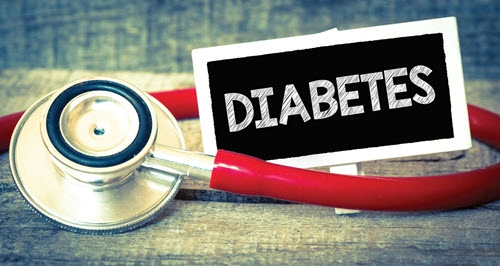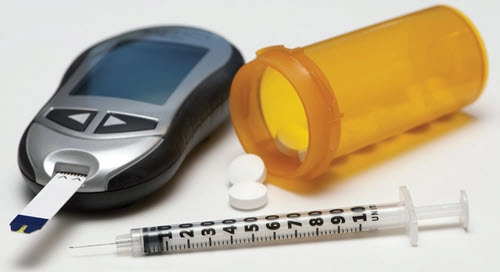Pediatric Coding Alert
Know These Guidelines for Trouble-Free Type 1 Coding
Hint: It’s not quite as simple as knowing E10 from E11. As a peds coder, you’re fully aware that while type 1 diabetes is sometimes referred to as juvenile diabetes, type 1 patients are not the only diabetic patients your office sees. That means you know enough to understand the difference between coding E10.- (Type 1 diabetes mellitus) and E11.- (Type 2 diabetes mellitus). But when electronic medical records (EMRs) often default to E11.-, and when even ICD-10 guideline 4.a.2 notes that E11.- is the default documentation “if the type of diabetes mellitus is not documented,” the potential for miscoding is always there. And that can lead to major problems down the line. So, to make sure you get your type 1 coding right, here are the four guidelines you need to know to help you resolve diabetes reporting problems before they even begin. 1) Guideline C.4.a.1 This important guideline for peds coders can sometimes lead to problems. That’s because “many associates new to the medical and billing coding field get confused when they see type 1 diabetes mellitus described as ‘juvenile type,’” says Jean Pryor, CPCO, CPMA, CPC, CPB, CPC-I, CRC, CCS-P, CHAP, administrator of CBO Compliance, St. Elizabeth Physicians, Cincinnati. The guideline explains that “type 1 diabetes mellitus is also referred to as juvenile diabetes” because “most type 1 diabetics develop the condition before reaching puberty.” “This can lead to some coders assuming that in order to have type 1 diabetes, you must be a juvenile. I have seen where some change a diagnosis code for type 2 diabetes to a type 1 diabetic simply based on the age of the patient,” Pryor notes. However, the guideline goes on to note that “the age of a patient is not the sole determining factor when assigning a diabetes diagnosis.” So, “we need to code based on what is documented and what is appropriate according to the ICD-10 guidelines,” cautions Pryor. Coding alert 1: While a pediatric patient with diabetes is more likely to be diagnosed with type 1, a diagnosis of type 2 cannot be ruled out. This is borne out by recent statistics provided by the American Diabetes Association (ADA) that note “in 2014-2015, the annual incidence of diagnosed diabetes in youth was estimated at 18,200 with type 1 diabetes, 5,800 with type 2 diabetes” (Source: www.diabetes.org/resources/statistics/statistics-about-diabetes). 2) Guideline C. 4.a.2 As we have already seen, this guideline is also a dangerous one to navigate, as it designates E11.-, or type 2 diabetes, as the default diagnosis when the medical record does not specify the diabetes type. The consequences of following this guideline blindly can potentially be very problematic. That’s because “if your patients have type 1 diabetes, their care will be much more complex, and this will not be supported if the diagnosis doesn’t match the treatment,” says Marcella Bucknam, CPC, CCS-P, COC, CCS, CPC-P, CPC-I, CCC, COBGC, revenue cycle analyst with Klickitat Valley Health in Goldendale, Washington. This means “treatments may not be paid, because physician payment is becoming increasingly value-based and payments are risk-adjusted based on patient conditions,” cautions Bucknam. So, it is vitally important that you work with your pediatrician to arrive at the most specific diabetes diagnosis possible for your patient. 3) Guideline C. 4.a.3 This long and somewhat confusing guideline offers instructions for coding medication use in diabetic patients. To unpack the guideline, you need to know something about the three different drugs mentioned in the guideline and the ways they are used to manage the different types of diabetes. This will quickly point you in the direction of the correct Z79.- (Long term (current) drug therapy) code to use in addition to coding the patient’s diagnosis. Coding for insulin use. Type 1 diabetics, who cannot produce insulin at all, are regarded as insulin dependent and must take this drug throughout their lives, usually via a pump. For long-term insulin use, the guideline tells you to code Z79.4 (Long term (current) use of insulin). Coding alert 2: Occasionally, type 2 sufferers, whose insulin is not of sufficient quantity or quality to absorb the body’s blood sugars, may also inject insulin on a short-term basis. When this happens, the guideline tells you not to assign Z79.4 “if insulin is given temporarily to bring a type 2 patient’s blood sugar under control during an encounter.” Coding for injectable non-insulin antidiabetic drug use. Diabetics (usually type 2) can also inject several drugs, such as exenatide, liraglutide, dulaglutide, and albiglutide, to help control their blood sugar levels. For long-term use of non-insulin antidiabetic drugs, you’ll use Z79.899 (Other long term (current) drug therapy). Coding alert 3: The guideline also tells you that “if the patient is treated with both insulin and an injectable non-insulin antidiabetic drug, assign codes Z79.4 … and Z79.899.” Coding for oral hypoglycemic drug use. Again, these are mostly used to control blood sugar levels in type 2 diabetics and include such medications as glimepiride, repaglinide, and metformin. For long-term oral hypoglycemic drug use, you should code Z79.84 (Long term (current) use of oral hypoglycemic drugs). Coding alert 4: When oral hypoglycemic drugs are used with other diabetic drugs over a long period, the guidelines require you to only code Z79.4 when they are used in combination with insulin, and to code both Z79.84 and Z79.899 when they are used in combination with injectable non-insulin antidiabetic drugs. And remember this instruction: Type 2 diabetics may or may not have to take medication at some point during the course of their disease depending on whether they can control it with diet and exercise. That’s why there is a note accompanying E11.- that tells you to use an additional code to identify control with either Z79.4 or Z79.84. Because type 1 diabetics are insulin dependent, a similar instruction does not appear with the E10.- codes, as ICD-10 assumes that all type 1 patients will be long-term users of the drug.

Pediatric Coding Alert
- Guidelines:
Know These Guidelines for Trouble-Free Type 1 Coding
Hint: It’s not quite as simple as knowing E10 from E11. As a peds coder, [...] - Modifiers:
Test Your Modifier 24 Understanding With These 2 Scenarios
And know whether the 2021 office/outpatient E/M changes will affect its use. If you’re not [...] - Procedure Coding:
Use These Tips to Improve Your Urinalysis Understanding
These 4 simple pointers will sharpen your testing savvy. Urinalysis tests are so common and [...] - You Be the Coder:
Document Drug, Dose, and Decision for MDM Credit
Question: Our pediatrician told a patient to continue taking a given medication at the same [...] - Reader Questions:
View the Correct Way to Code This Corneal Abrasion Encounter
Question: Our pediatrician examined a patient’s eye using a Wood’s lamp. She placed a drop [...] - Reader Questions:
Add This COVID-19 Code to Your Vaccination List
Question: I know we now have CPT® vaccine and vaccine administration codes for the current [...] - Reader Questions:
Remove Paring Code in This Lesion Destruction Encounter
Question: Our pediatrician recently removed a wart from a patient’s hand. She began by paring [...]

